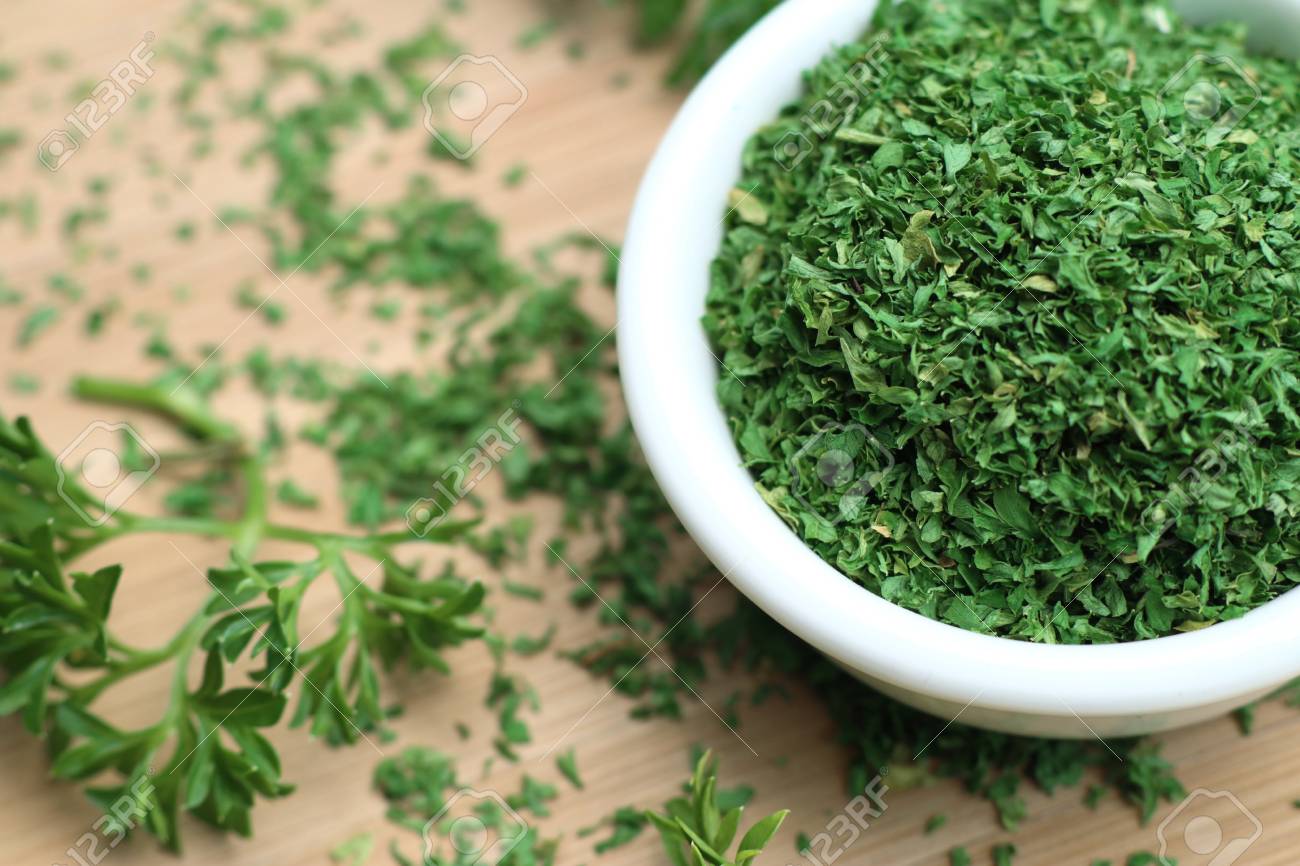Parsley Petroselinum crispum Dried Leaves in Bulk packaging Shipped in 20″ FCL Container
Login to view prices
Common name: Parsley
Latin name: Petroselinum crispum (Mill.)
Family: Apiaceae (Umbelliferae)
Other names: Engl.: garden parsley, parsley, common parsley, curled parsley, moss curled parsley. Deu.: Petersilie, Suppenwurzel. Suom.: persilja. Sven.: persilja, bladpersilja, kruspersilja, rotpersilja, slätbladig persilja. Bot. syn.: Apium petroselinum L., Carum petroselinum Benth. & Hook. f., Petroselinum hortense auct., Petroselinum sativum Hoffm., Petroselinum tuberosum Bernh. ex Rchb., Petroselinum vulgare Lagasca.
Botanical Origin:
Common name: Parsley
Latin name: Petroselinum crispum (Mill.)
Family: Apiaceae (Umbelliferae)
Other names: Engl.: garden parsley, parsley, common parsley, curled parsley, moss curled parsley. Deu.: Petersilie, Suppenwurzel. Suom.: persilja. Sven.: persilja, bladpersilja, kruspersilja, rotpersilja, slätbladig persilja. Bot. syn.: Apium petroselinum L., Carum petroselinum Benth. & Hook. f., Petroselinum hortense auct., Petroselinum sativum Hoffm., Petroselinum tuberosum Bernh. ex Rchb., Petroselinum vulgare Lagasca.
Description:
Parsley is a hardy biennial, bearing greatly divided pinnately-compound and characterized by curled, crisped green leaves. Flowers are greenish-yellow in compound umbels, the flowering and fruiting plant reaches a hight of from 2 to 3 ft.
The fruit commercially called seed, are smooth, ribbed and ovate, and consists of two dried mericarps joined along the center commissure when fresh (but usually seperated in the commercial lots).
All parts of the plant, particularly the seed, contain a volatile or essential oil which is responsible for the pronounced odor and flavor of parsley; the oil can eb recovered by steam distillation.
Range & Habitat:
Parsley is is a biennial herb native to Mediterranean countries, Europe and western Asia and has been cultivated as a garden herb since antiquity.
The reported life zone for parsley is 5 to 26 ºC with an annual precipitation of 0.3 to 4.6 meters and a soil pH of 4.9 and 8.3. The plant prefers a rich, moist soil with good drainage.
Planting & Cultivation:
Parsley, similar to other members of the Apiaceae family, has seeds that have an erratic and low germination rate even under optimum field conditions. Seeds germinate slowly and unevenly in the cold, wet soils characteristic of early spring. The use of transplants under certain conditions such as limited acreage or roadside marketing of produce may be a preferred alternative.
Field preparation is similar to other small seeded crops. A fine seedbed is required. The usual procedure is to finish the soil after plowing and disc harrowing with rototillers and bed shapers. Rich moist soil with good drainage and a pH of 5.3 to 7.3 is preferred. Cover seeds no deeper than one-quarter inch. If working with heavy textured mineral soils, cover seeds with leaf mold, sand orpeat to avoid crusting.
Sowing rates vary greatly, from 12 to 20 lbs. in some locations toas high as 40 to 60 lbs. of seed per acre depending on soil and environmental conditions. Seeds should be sown in the spring as soon as soil can be worked. In the North, better results are achieved by starting plants indoors and transplanting them to open ground after danger of freezing weather is past.
Seed parsley into 60 inch raised beds with three or four rows, 18 to 22 inches apart on each bed. An alternative is to plant double rows on a 36 to 42 inch bed. Transplants may be spaced 4 to 8 inches apart on 36 inch rows. Customized cultivation equipment (e.g., ground driven basket cultivators) is required to cultivate between narrow rows and avoid damage to seedlings. Hoeing is a common method of weed control in the row even if herbicides are used or in states where herbicide product registrations have not been obtained. Research has shown that highest yields can be obtained with very high plant populations.
Fertilization:
The rate of fertilizer application will depend upon soil type and prior cropping history. A suggested N-P-K ratio of 1-1-1 or 3-1-2 should be used depending on soil test results. On heavy textured soils a single broadcast application of N-P2O5-K2O at a rate of 120-120-120 lbs. per acre will provide crop needs. Sidedress with N after the first cutting if a second cutting is desired. On well drained light textured soils and muck soils higher fertilization rates are frequently used. Generally, one-third of the fertilizer is broadcast. This is followed by two side dressings of N-P-K fertilizer and supplemented with N as required by soil test and crop needs.
Harvesting and Preparing for the Market:
Harvesting for the Fresh Market:
Parsley harvesting is labor intensive, with hand labor being the preferred method in order to obtain the least amount of crop damage acceptable for fresh market use. A worker may group a bunch of plants with the hand, slice the stalks with a knife and slip a rubber band around the cut stalks to maintain bunch integrity. Some markets may prefer parsley to be packed loose for bunching later. Parsley must be cut at least 1 to 1 1/4 inches above the crown if multiple cuttings are desired. Machine harvested fields are mechanically clipped 1 to 3 inches above the crown. The parsley is conveyed to trucks for transport to dehydrators. Multiple harvests by hand or machine are possible depending on crop quality.
In some states three seeding periods per year will give continuous harvesting from April through December (in the North). A summer sowing is fall harvested, a fall sowing may be successfully over-wintered for harvest in early spring and spring sowings are harvested in late spring through summer. The earliest harvest of the spring-seeded crop frequently brings the highest price because of superior quality as compared with the over-winter crop.
Hamburg, or turnip-rooted, parsley is very hardy and can withstand a moderate freeze in the open. Plants may be left in the ground until marketing, or may be dug and stored in trenches or a root cellar until marketing. Spreading hay over the crop in the field has been used to improve tolerance to severe freezing temperatures. Roots should be washed and discolored leaves removed before marketing.
Postharvest Handling:
For the fresh market, bunches of parsley should be washed and any faded or yellowing leaves discarded. Parsley may be packed and shipped hydrocooled or package iced to maintain crispness and fresh appearance. Parsley is shipped in wooden bushels or in wax, corrugated 1 1/9 bushel universal cartons. Optimum storage and handling temperatures are 32 to 36° F at 95% relative humidity.
Harvesting for the Parsley Seed Oil:
As soon as the seed is ripe, it should be harvested and carefully dried. The plants are collected, and after several hours of drying, the material is ready for threshing. The crude seed, after threshing is submitted to winnowing and finally sifted into various sizes.
The quantity of chaff resulting from the winnowing of the seed is so small that it can hardly be considered as distiller’s material.
Harvesting for the Parsley Herb Oil:
The overground herb should be harvested, like dill, when seed has formed but not yet matured; in other words, the herb bearing unripe seed should be distilled
Yield of seed per Acre:
In France, depending on the year, 800 to 1500 kg of parsley seed are obtained per hectare
Export Markets:
We export our products to many countries all over the world. USA, France, Germany, China, Malaysia, Algeria, Morocco, Indonesia…etc
Quotation:
- Incoterms: FOB
- Quantity: one 20″ FCL Container Minimum
- Specification: 100% natural and Pure quality
- Documentation: COA, MSDS, TDS, GC Peaks
- Packaging: Bulk Packaging
- Payment terms: TT in advance to Our bank account
- Lead time: Shipping through 10 days from receipt of the payment.
- Sea Shipping Time: 35 days
- Air shipping time: 10 days
Quality Certificates:
- ISO 9001-2015
- ISO 22000-2005
- GMP accredited by AQC Middle East FZE
- KOSHER Certificate
- Halal Certificate
- ORGANIC Certificate accredited by CERES GmbH Germany
- NOP Certificate accredited by CERES GmbH Germany
- Egyptian Ministry of Health Permission
Contact us please to receive other supporting documents for our Oils :
- COA
- MSDS
- TDS
Branding Services
We also can do customized packaging for you to pack whatever size you like. We can help in designing labels, selecting good packets or bags. We deliver integrated solutions under your brand..
Organically Certified product Available upon request
Additional information
| Weight | 12000 kg |
|---|---|
| Dimensions | 610 × 244 × 259 cm |
| Country of Origin | Egypt |
| Ship from | Egypt |
| 20 Container Capacity H | 8000 kg |
| Herbal Part Types | Crushed leaves Large cut, Dried Whole Leaves, Crushed leaves Medium cut, Crushed leaves small cut, Powder |
| Herbs Packaging | PE bags 25 Kg, PE Bags 50 kg, Paper Bag 25 kg, Paper Bag 50 kg |
| Cultivation Type | Organic, Conventional |
| HS Code | 09109990 |
| Custom Branding & Packaging | Yes, OEM Custom banding, designing and packaging are available for that product |
| Herbal OEM Packaging | Kraft Bag, Kraft Bag with transparent window, Kraft bag with open side, Glass Jar, Glass jar Spices with holed lid, Tea bag, Tea bag with paper bag, Tea Cylinder packaging, Tin Packaging |
| Documentation & Certifications | Allergen Free Certificate, Bovine Spongiform Encephalophathy (BSE) Certificate, GMO Certificate, GRAS Status Statement, Herbal Origin Statement, Organic Certificate, Pesticide Residual Certificate, Halal Certificate, KOSHER Certificate, Researches & Studies, Certificate of Analysis (COA), Technical Data Sheet (TDS) |
-
Login to view prices
-
Login to view prices
-
Login to view prices





